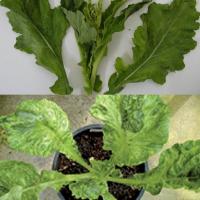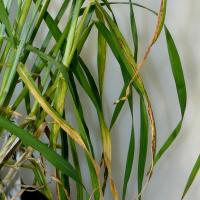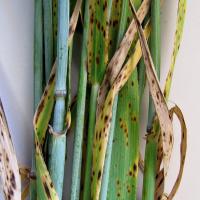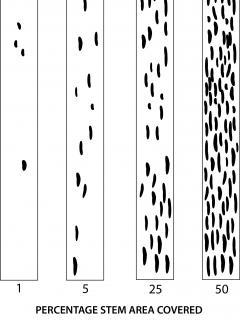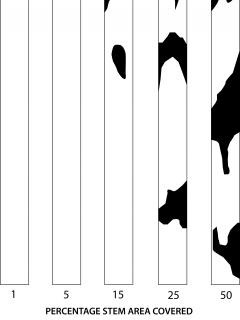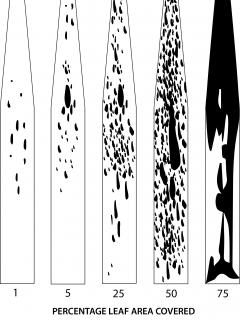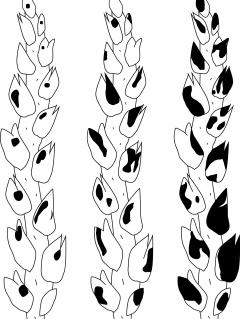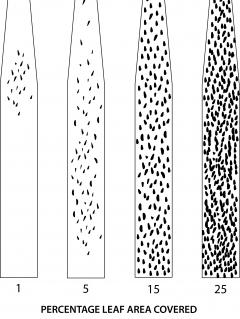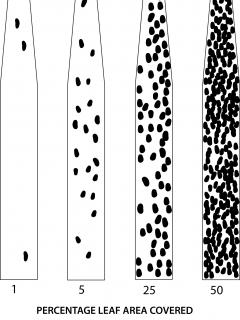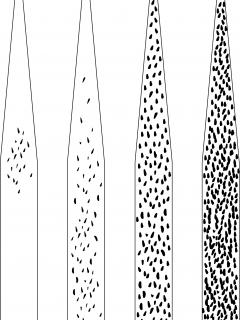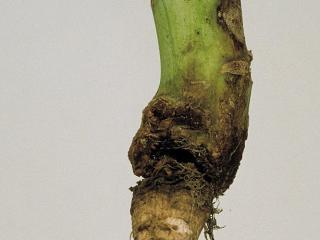Identifying disease on your farm may also point to the need to alter other agronomic management practices, such as:
- Selecting resistant varieties
- Widening the rotation gap between crop types
- Avoiding planting susceptible crops next to the previous seasons infecting stubble
- The need to seek clean, disease free seed for sowing next year
- Using seed dressings
How to monitor leaf disease
- At 10 random sites along your monitoring path, place a 50cm ruler at random between two rows of crop.
- Examine crop plants on both sides of the ruler carefully, examining all parts of the crop plants.
- Identify diseases that are on the plants.
- Rate the severity of disease on individual plants using appropriate rating scales, and estimate the percent leaf area of the crop affected by each disease.
- In most cases the severity of leaf disease is given as the percentage of leaf area covered by the disease (%LAD).
Leaf disease can occur at any time in the crop growing season. Most leaf diseases reach their highest levels during the warmer moist conditions that occur in spring.
Ten to twelve weeks after sowing
Diseases such as chocolate spot on beans, grey mould on lentils or leaf rust infect crops during late winter and spring. Regular assessment of the crop for these diseases is important for determining fungicide applications.
For some diseases no preventative action is possible in the crop for economic reasons. A single assessment in spring will give an estimate of the amount of disease and hence yield loss that has occurred. This information will help decide management changes that need to occur in subsequent crops to reduce future losses from disease.
Leaf disease identification
- It is important to check the underside of leaves when checking fungal growth
- The most common disease in canola is blackleg. Look for lesions on leaves and stem when assessing the impact of blackleg
- Blackspot in peas initially infects the lower leaves on the plant and subsequently move up the stem and higher leaves. It is easier to measure the progress of the disease in spring as low, medium or high infection depending upon the height of the plant it has reached. The disease can also infect the crown area of the plant even when there is very little blackspot on the leaves. This situation can be misleading since the infection may not look severe but can translate to high yield penalties.
When downy mildew it is more appropriate to consider the whole plant and not %LAD.
Interpreting leaf disease assessment
Crops or varieties lacking disease resistance may require the application of appropriate foliar fungicidal treatments to achieve full yield potential of the particular crop. Rotation planning will assist in reducing the impact of foliar disease (for example, blackleg in canola, yellow leaf spot in wheat, black spot in peas).
Fungicide sprays need to be timed to provide maximum protection for the most important plant components. In cereals the most important plant growth determinants of yield and quality are the top three leaves and the ear. For maximum benefit, fungicide often needs to be applied between the start of stem elongation and full ear emergence. Approximately 75-80% of yield is generated by the top three leaves so these are the most important to protect from disease.
| Ear | Leaf sheath | Flag | Leaf 2 | Leaf 3 | |
|---|---|---|---|---|---|
| Wheat | 22 | - | 43 | 23 | 7 |
| Barley | 13 | 25 | 9 | 20 | 10 |


